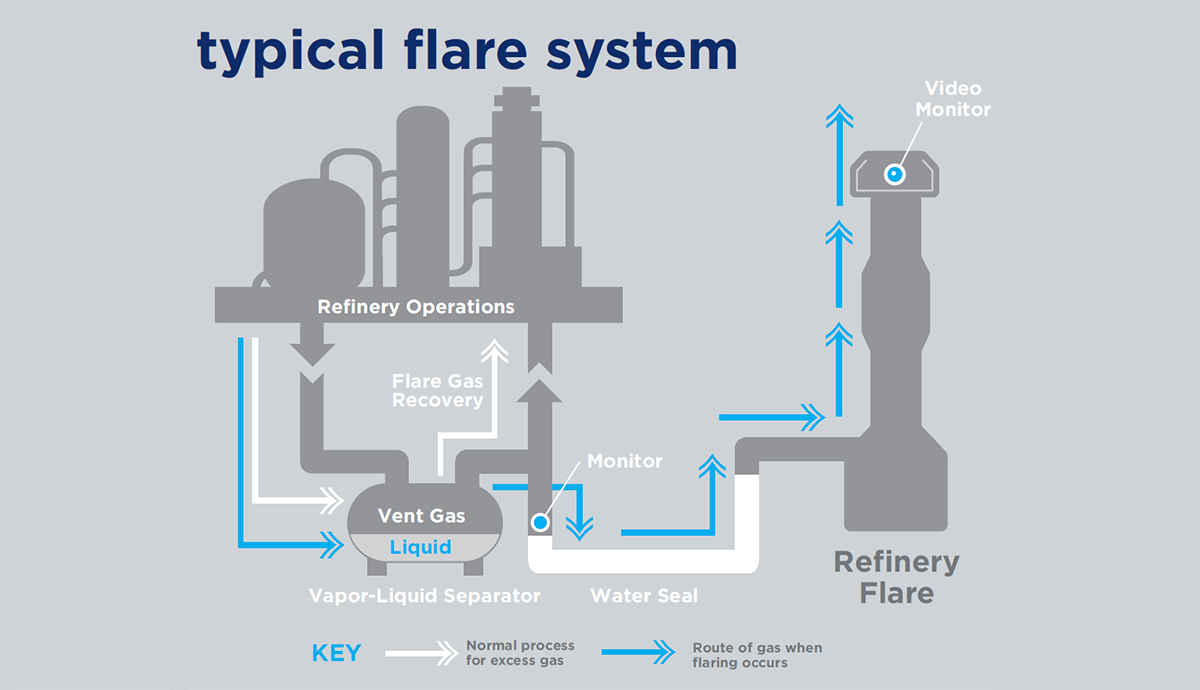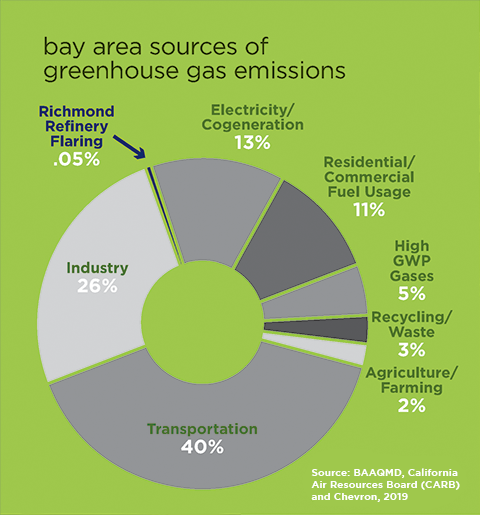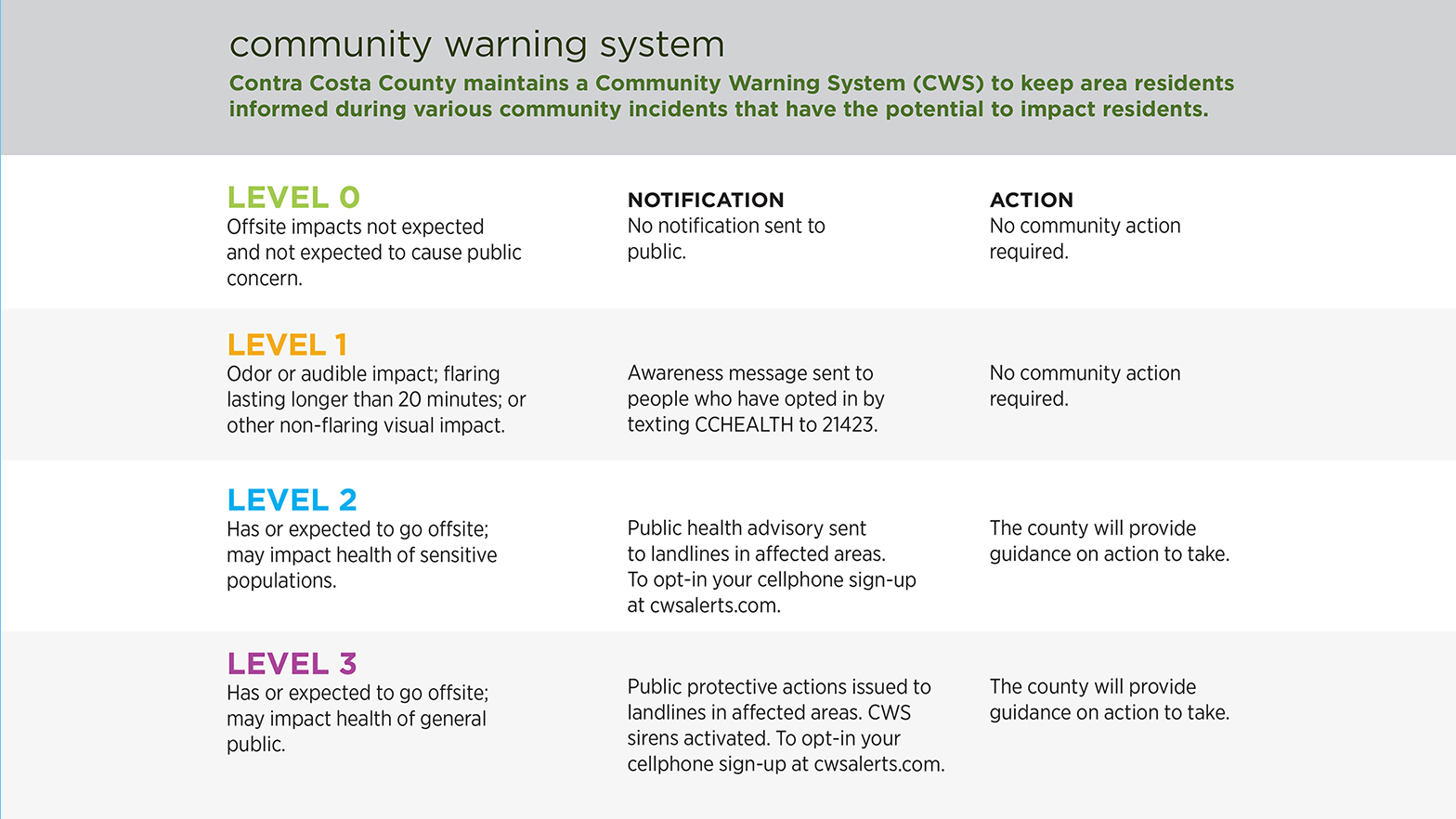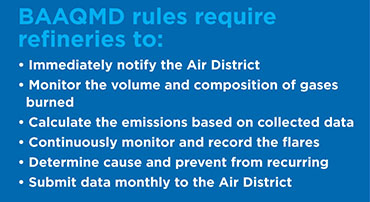a community guide to understanding refinery flares

We recognize that the community is concerned with flaring and the noise and visual effects it may create. We have created this guide, with information from the Bay Area Air Quality Management District (BAAQMD), to help residents better understand what flaring is, what we do to prevent it, and how we minimize it.
facts about flaring
Did you know?
BAAQMD’s flare regulations are some of the first and most stringent flare monitoring rules in the nation. The goal is to minimize the frequency and magnitude of flaring. Since adoption of the regulations, flaring events at Bay Area refineries, including Richmond, have been significantly reduced.
ask a chevron employee
lorraine reyes
general manager
products and technology at chevron richmond
bay area sources of greenhouse gas emissions

monitoring air quality
Air monitoring is one of the tools used to understand neighborhood air emissions and increase transparency. Chevron Richmond funds an independently operated community air monitoring program. In addition, there are a number of other public and private sources of air monitoring data that the community is able to access.

air monitoring sources
www.richmondairmonitoring.org (funded by Chevron)
www.baaqmd.gov (search air quality)
www.transparentrichmond.org
www.purpleair.com
www.ramboll-shair.com
www.breezometer.com
www.airnow.gov
For a map of air monitoring locations in Richmond, click here.
Justin Fehr
General Manager, Operations
community resources
Register for CWS alerts online at cwsalerts.com.
For questions or comments call 510-242-2000 or go to richmondrefineryinfo@chevron.com
Follow on social media: @chevronRichmond Facebook and Twitter, @RFDCAOnline Twitter
Real-Time Air Quality: richmondairmonitoring.org
To report noise or odor issues, call 510-242-2127



